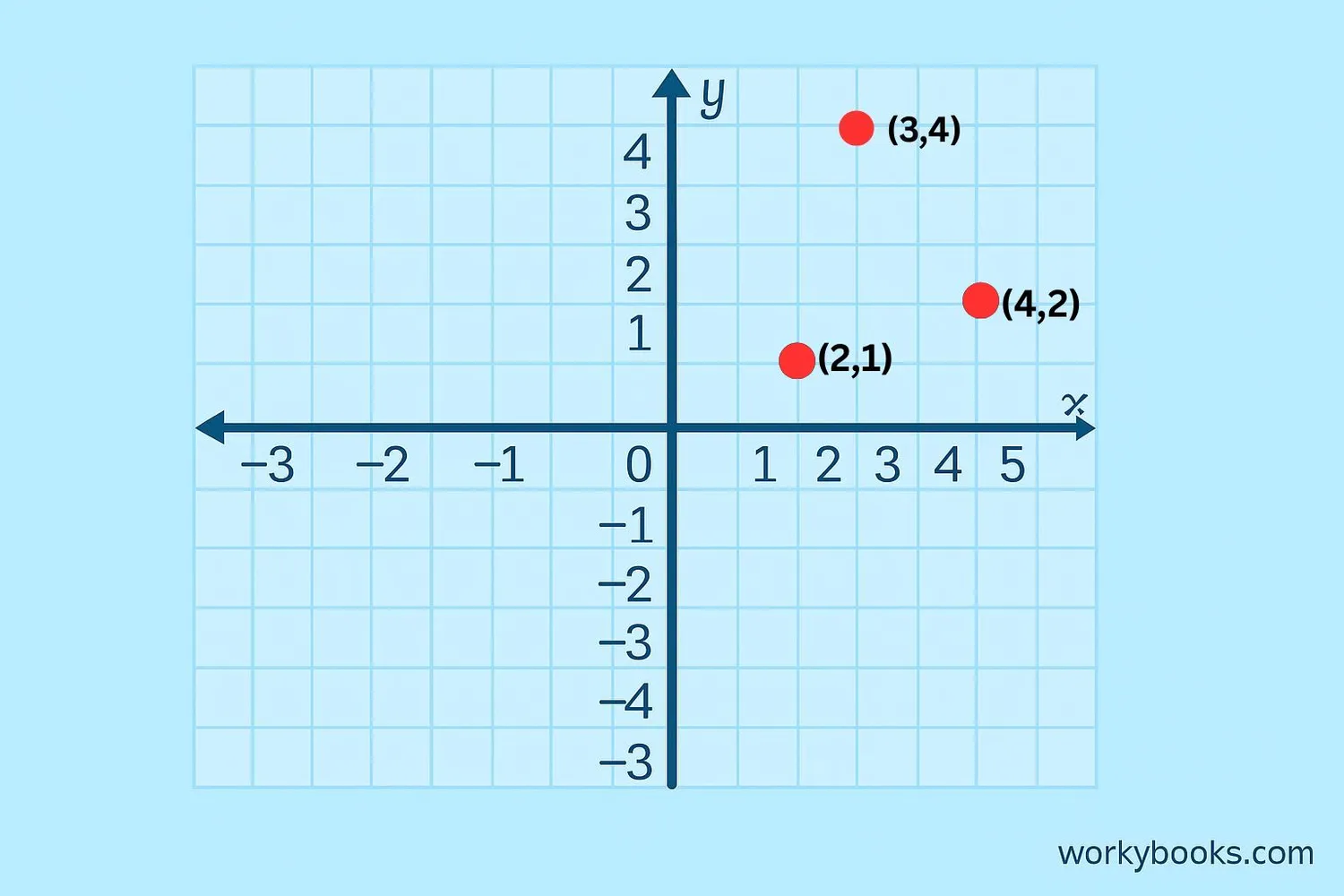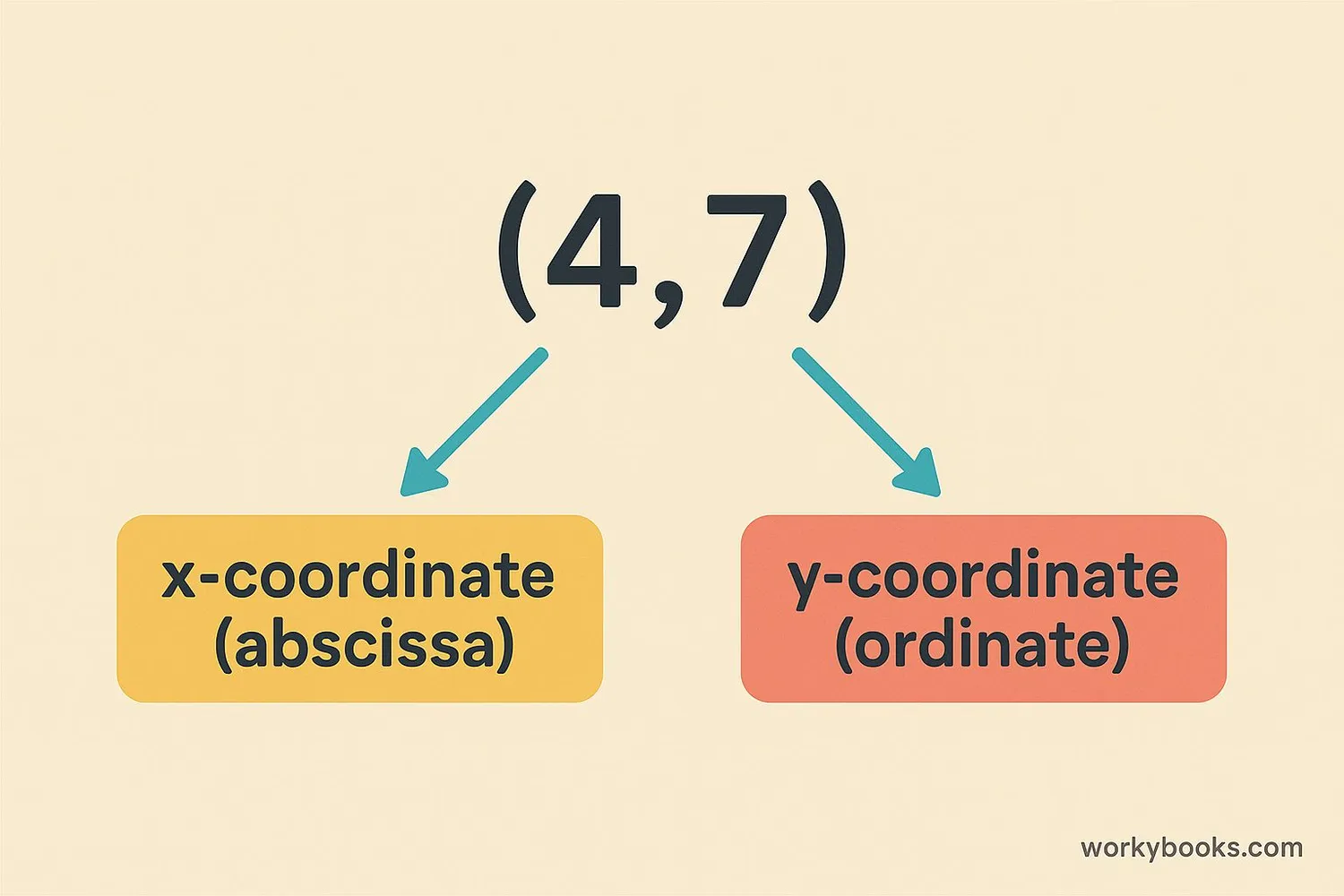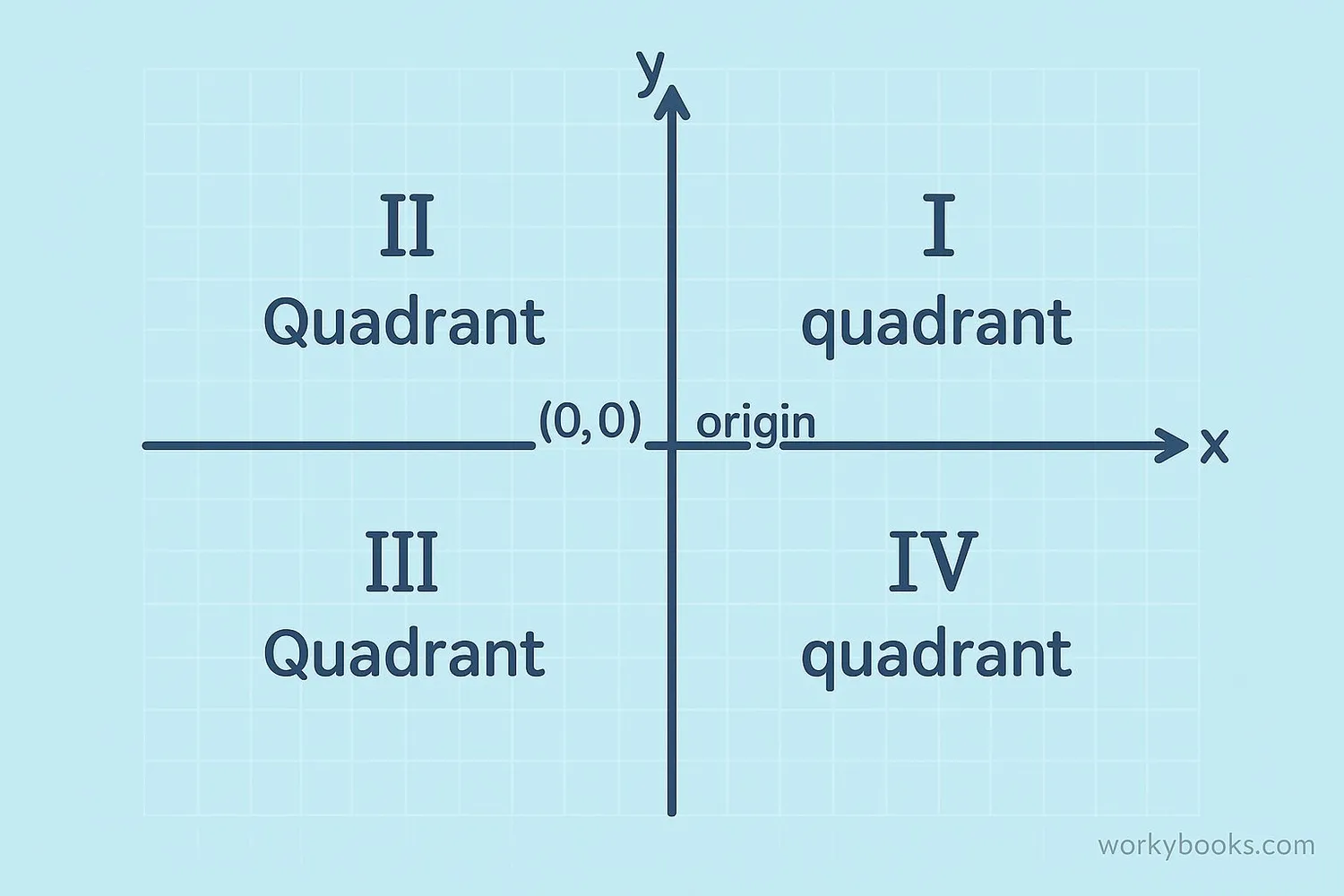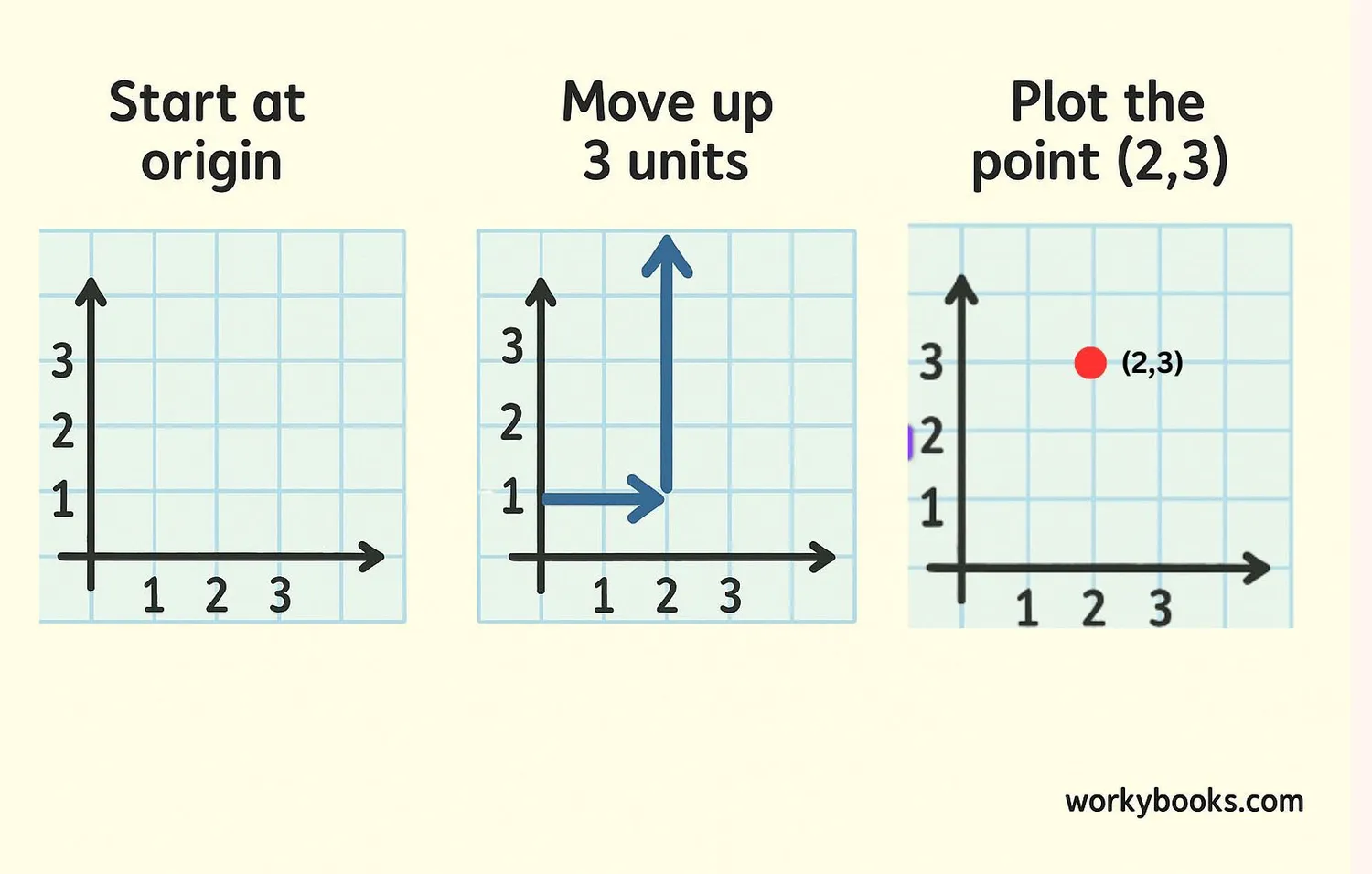Ordered Pair - Definition, Examples, Quiz, FAQ, Trivia
Learn about coordinates, plotting points, and the Cartesian plane with examples and activities
What Are Ordered Pairs?

An ordered pair is a pair of numbers used to locate a point on a coordinate plane. It's written in parentheses like this: (x, y). The first number (x) tells us how far to move left or right, and the second number (y) tells us how far to move up or down.
Ordered pairs are called "ordered" because the sequence matters! (3, 4) is different from (4, 3). The first number always represents the horizontal position (x-coordinate), and the second number represents the vertical position (y-coordinate).
We use ordered pairs in many real-life situations like:
- Map coordinates to find locations
- Graphing data in science experiments
- Video game character positions
- Architecture and engineering designs
Key Concept
An ordered pair (x, y) gives exact position: x = horizontal, y = vertical. The order matters!
Parts of Ordered Pairs

Every ordered pair has two special parts with mathematical names:
Ordered Pair Notation
x-coordinate (abscissa) | y-coordinate (ordinate)
- The first number in the pair
- Tells horizontal position (left/right)
- Positive numbers move right, negative move left
- The second number in the pair
- Tells vertical position (up/down)
- Positive numbers move up, negative move down
- The x-coordinate is 5 (move 5 units right)
- The y-coordinate is 2 (move 2 units up)
Remember
To remember the order: x comes before y in the alphabet, just like in (x, y).
The Coordinate Plane

The coordinate plane (also called Cartesian plane) is where we plot ordered pairs. It has two perpendicular number lines:
X-axis: The horizontal number line (left to right)
Y-axis: The vertical number line (up and down)
The point where they cross is called the origin, with coordinates (0, 0).
The plane is divided into four quadrants:
- Quadrant I: Both x and y are positive (top right)
- Quadrant II: x negative, y positive (top left)
- Quadrant III: Both x and y negative (bottom left)
- Quadrant IV: x positive, y negative (bottom right)

Key Concept
The coordinate plane has four quadrants formed by the x-axis and y-axis crossing at the origin (0,0).
Plotting Points

Plotting points is like following a treasure map! Here's how to plot an ordered pair:
Steps to Plot (x, y):
- Start at the origin (0,0)
- Move horizontally (left/right) using the x-coordinate
- Move vertically (up/down) using the y-coordinate
- Mark the point where you end up
Step 1: Start at (0,0)
Step 2: Move right 2 units (x=2)
Step 3: Move up 3 units (y=3)
Step 4: Place a dot at this location
Practice Plotting
Try plotting these points:
- (1, 4)
- (-2, 3)
- (0, 5)
- (3, -1)
- Positive x = right | Negative x = left
- Positive y = up | Negative y = down
- Zero means stay on the axis
Plotting Tip
Always move horizontally first (x), then vertically (y) - just like reading: left to right, then up and down.
Ordered Pairs Quiz
Test your knowledge with this 5-question quiz about ordered pairs and the coordinate plane.
Frequently Asked Questions
Here are answers to common questions about ordered pairs:
Math Trivia
Discover interesting facts about coordinates and graphing:
The Fly on the Ceiling
The story goes that René Descartes invented the coordinate plane while sick in bed. Watching a fly walk on his ceiling, he realized he could describe its position using two numbers - how far from one wall and how far from another.
Latitude and Longitude
The Earth's coordinate system works like ordered pairs! Latitude tells how far north/south (like y-coordinate), and longitude tells how far east/west (like x-coordinate). The origin (0,0) is where the Equator meets the Prime Meridian.
Chess Coordinates
Chess uses a coordinate system to record moves. The board has letters (a-h) for columns and numbers (1-8) for rows, creating ordered pairs like (e4, g5). This system was developed in the 18th century to document games.
Biggest Graph
The largest mathematical graph ever created was a model of the internet in 2011, containing over 7 billion points (ordered pairs)! Scientists use such graphs to study how information flows across networks.





